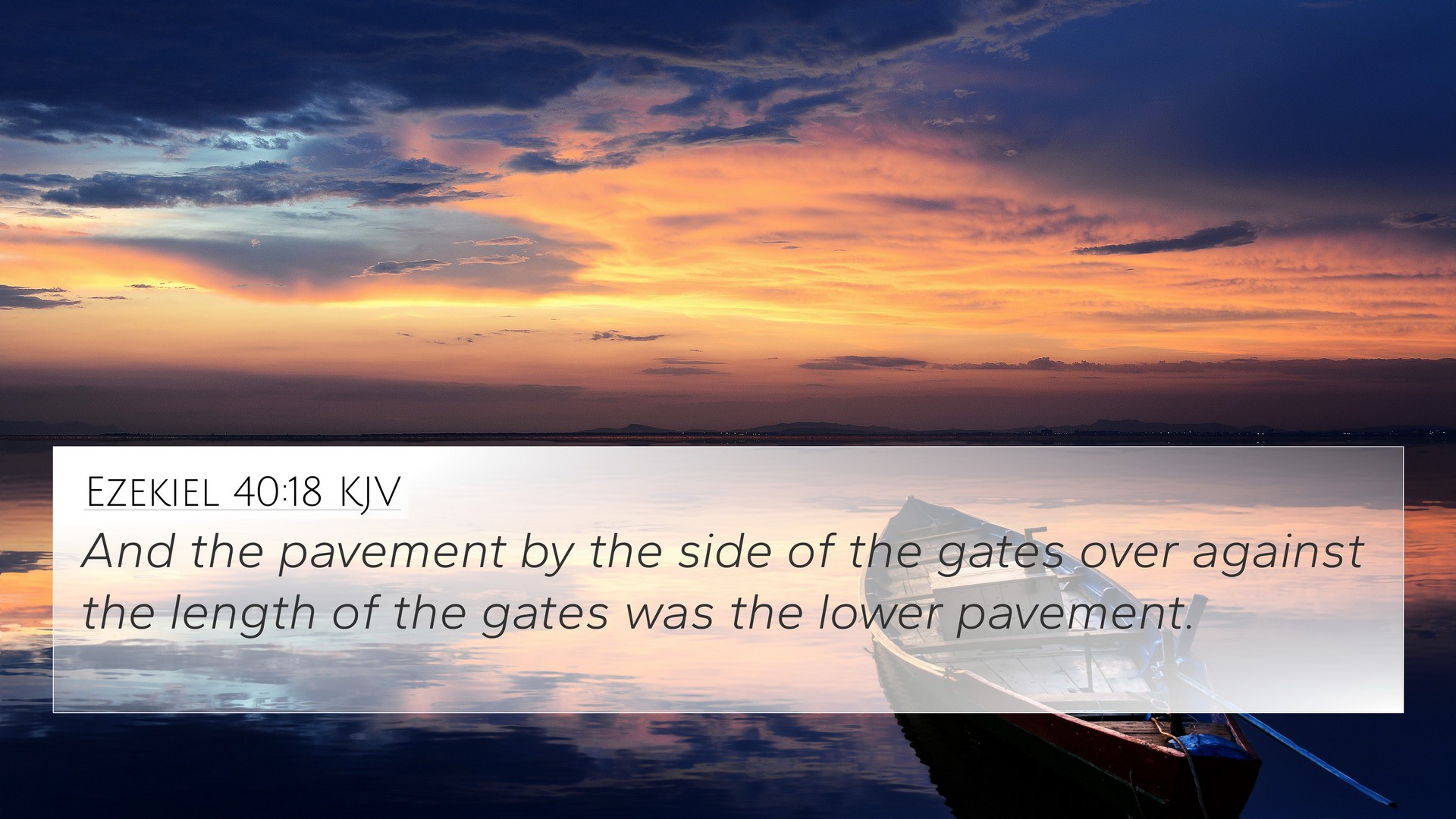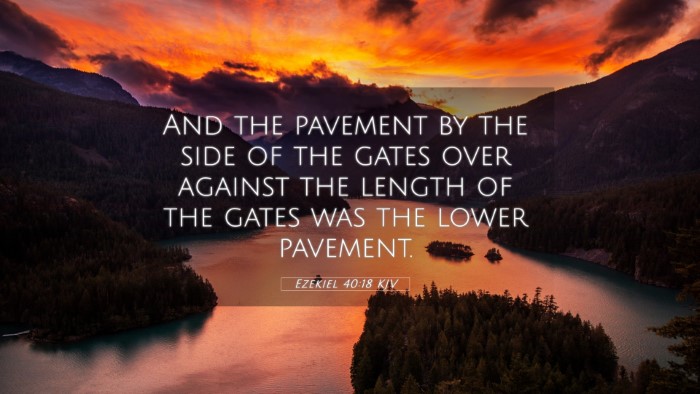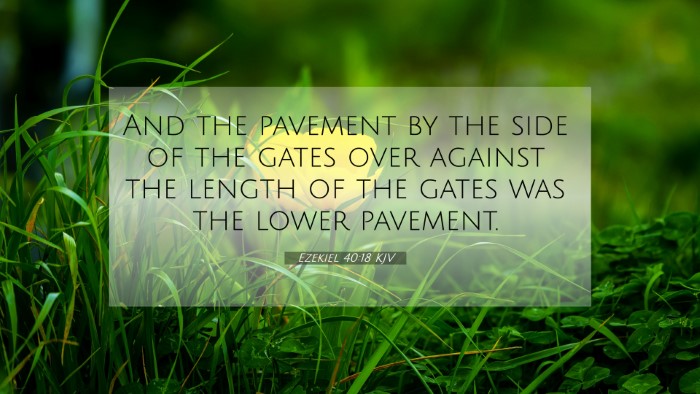Ezekiel 40:18 - Summary and Interpretation
Ezekiel 40:18 states, "And the pavement by the side of the gates over against the length of the gates was the lower pavement." This verse is part of a detailed vision given to the prophet Ezekiel about the future temple and its surroundings, symbolizing more than just architectural elements. It serves as a profound representation of divine order and the anticipation of restoration for Israel.
Contextual Significance
This passage occurs within a larger prophetic section where God reveals the blueprint of the temple, which serves as a symbol of His presence among His people. The mention of the "lower pavement" and "gates" indicates a structured worship space, essential for worship practices. Understanding this spatial arrangement provides insights into the sacredness of the site and the importance of reverence in worship.
Commentary Insights
Various public domain commentaries provide layered meanings to Ezekiel 40:18 that deepen our understanding:
- Matthew Henry: He emphasizes the significance of the structural elements in Ezekiel's vision, indicating the meticulous nature of God's design for worship and the orderliness of worship practices.
- Albert Barnes: He highlights the material components, depicting the lower pavement as a foundational aspect of the temple, showcasing the stability and firmness of God's covenant with His people.
- Adam Clarke: Clarke notes the spiritual symbolism of the pavements, interpreting them as representations of the paths of righteousness one should follow in their walk with God.
Thematic Connections
The vision of the temple in Ezekiel not only serves to illustrate the physical restoration of Jerusalem but also symbolizes theological themes of holiness, divine presence, and the community's relationship with God. The lower pavement can be viewed as a metaphorical foundation for spiritual living, prompting believers to reflect on their own foundational practices in faith.
Cross-References for Further Study
To deepen your understanding of Ezekiel 40:18, consider the following Biblical cross-references:
- Revelation 21:10-11: A description of the New Jerusalem, echoing themes of restoration and divine presence.
- Isaiah 54:11: A prophecy detailing the future glory of Zion, connecting to God's promises.
- Hebrews 10:19-22: Encouragement for believers to enter the holy place, linking the physical temple to spiritual realities.
- 1 Corinthians 3:16-17: The significance of believers as the temple of God, emphasizing purity and reverence.
- Psalm 84:1-2: Expressing a longing for the dwelling of God, paralleling the yearning for a restored worship place.
- Ezekiel 43:1-5: Further descriptions of God's glory returning to the temple, reinforcing the significance of sacred spaces.
- John 14:2-3: Jesus speaking of preparing a place, connecting future hope with divine harmony.
- Matthew 21:12-13: Jesus cleansing the temple, highlighting the importance of reverence in spaces set apart for God.
- Acts 7:47-50: Stephen’s reflections on the temple and God's dwelling, reinforcing the connection between God and His people.
- Zechariah 8:3: God's promise to restore Zion, aligning with themes of protection and worship.
Conclusion
Ezekiel 40:18 encapsulates the essence of divine orders and worship structures. Through careful analysis and cross-referencing Biblical texts, one can uncover the broader themes of God’s presence, the call for spiritual foundations, and the promise of restoration echoed throughout scripture. Emphasizing these inter-Biblical dialogues fosters a deeper understanding of the text, illuminating its relevance in both historical and contemporary contexts.


